Greetings! Two weekends ago, I got to take a trip to Cape Evans north of McMurdo Station on Ross Island. On the way, we stopped to hike around an iceberg frozen in the sea ice. Then we continued on from Cape Evans to visit the "Terra Nova" Hut that was built by Robert Scott in 1911 during his
expedition to the South Pole. Below are some photos both from the hike and the hut. :)
The drive to Cape Evans went over the sea ice. Roads on the sea ice are marked with flags every one hundred feet or so. Each year, the sea ice has to be tested for cracks and other weaknesses before the roads can be laid out, and on a regular basis, the sea ice roads are double-checked for safety. Not all parts of the sea ice are stable enough for people to even walk on. There are cracks throughout, many of them caused by the tides, which still occur, even though the water is frozen. By December, the sea ice will be too thin to support vehicles and buildings. Right now, though, everything is stable.
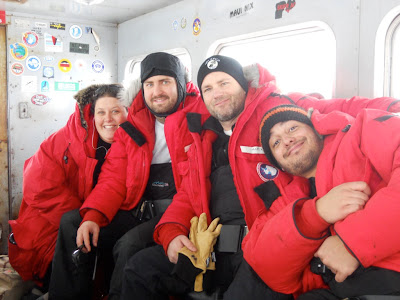 |
| Here I am with my friends Sheryl, Matt, and Mike. Mike is the recreation coordinator and the one who organized the Cape Evans trips that go out each weekend. |
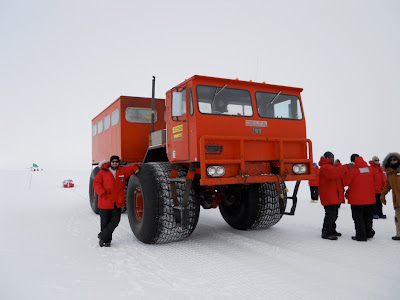 |
| I'm standing beside the vehicle we rode in to get to Cape Evans. It's called the Delta, and it's tires are HUGE! The driver and a couple passengers rode up front and the rest of us were in the trailer in back. Behind the trailer is the sled which carried emergency supplies in case we got stuck. |
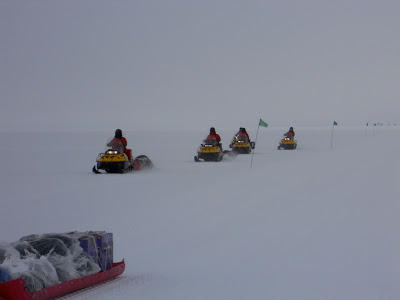 |
| Some Kiwis passed us on their snowmobiles. You can see the flags that mark the road on the right. We refer to the New Zealanders who live and work at Scott Base as Kiwis for short. |
|
|
|
|
Below are some photos from the hike around the iceberg. This iceberg was not in this spot last year. At some point during the summer, it floated into the Ross Sea and stayed there until the sea froze it into place. What you see above the ice is only the tip of the entire iceberg. (Imagine how little of an ice cube is above water when it floats.) Even still, the small above-water part of the berg was a good thirty to forty feet high.
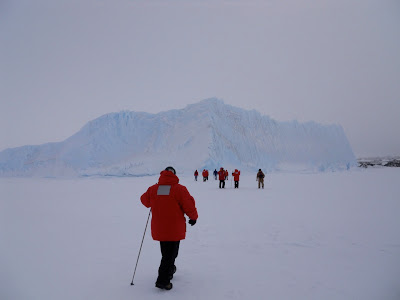 |
| Approaching the iceberg |
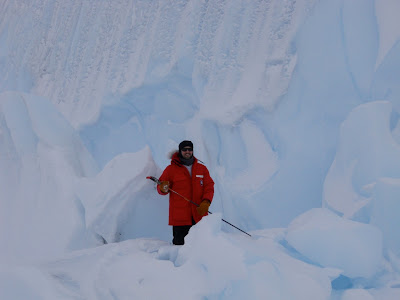 |
| At the point where the sea ice meets the iceberg, the ice cracks up into many pieces due to tides, changes of temperature, and other factors. Here I stand among some of the broken pieces. |
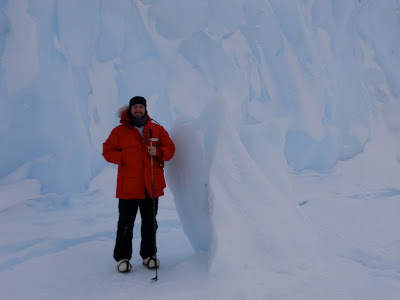 |
| More broken pieces around the edge of the iceberg. |
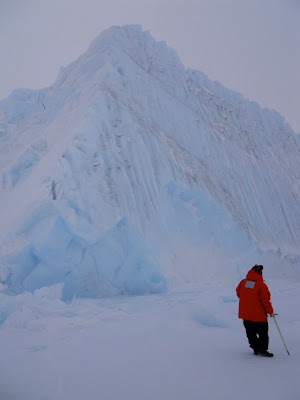 |
| The vertical lines on the side of the iceberg look amazing. |
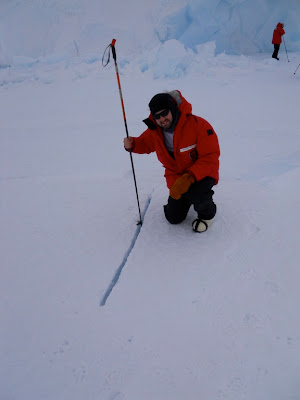 |
| Here's a crack in the sea ice near the iceberg. While there were a plethora of cracks, none of them were such that I could have fallen into the sea underneath. More likely I would have twisted my ankle, which I fortunately did not do. |
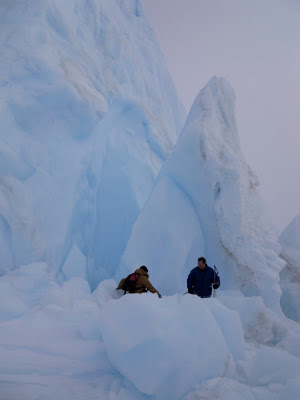 |
| Two hikers standing next to a huge chunk of ice that broke off the side of the iceberg. |
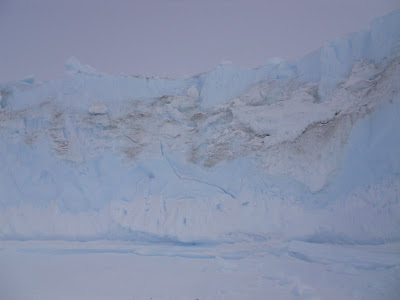 |
| More cool features on the side of the iceberg. I'm not sure where the black dirt came from, but most likely it was blown by the wind from a nearby island. |
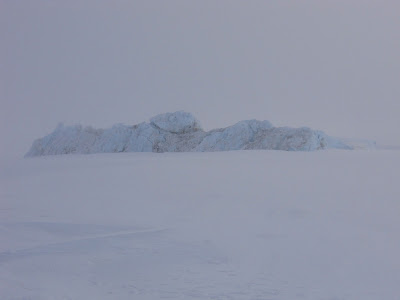 |
| Another iceberg about half a mile away from the one we hiked around. |
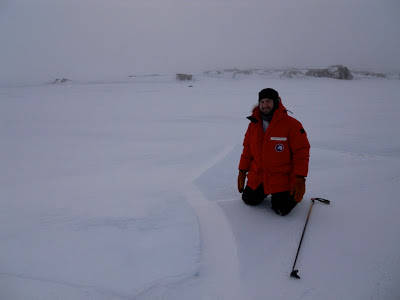 |
| A huge crack in the sea ice that's filled in with snow. Behind me to the left in the distance lies a seal. |
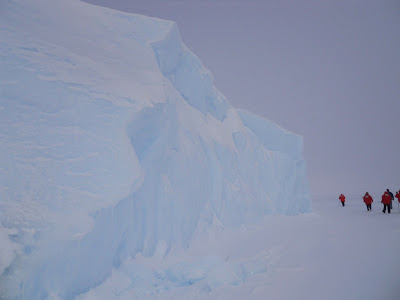 |
| Another view of the iceberg. |
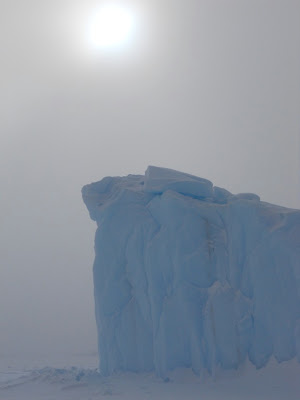 |
| The corner of the iceberg under a hazy sun. |
After hiking around the iceberg, we drove to Cape Evans to visit Scott's "Terra Nova" hut, built in 1911. This hut is bigger than the "Discovery" hut and was used not only as a place to stay but also as a scientific research lab.
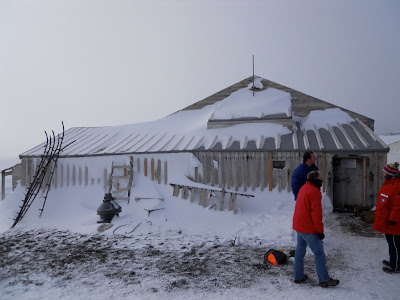 |
| Outside the "Terra Nova" hut |
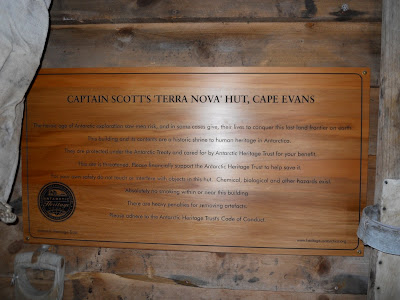 |
| The plaque in the entryway of the hut |
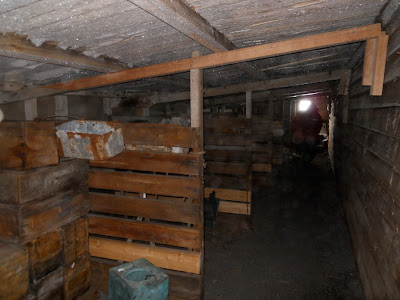 |
| Scott brought horses with him on his "Terra Nova" expedition and kept them in the stables here. |
 |
| Here's the skeleton of one of the sled dogs that Scott brought with him. |
|
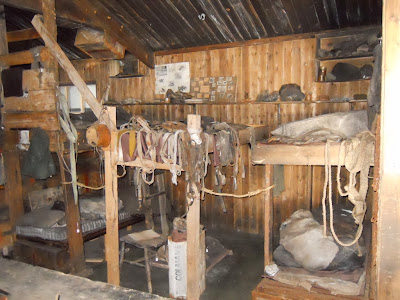 |
| Scott and his men slept in these bunks during their time here. |
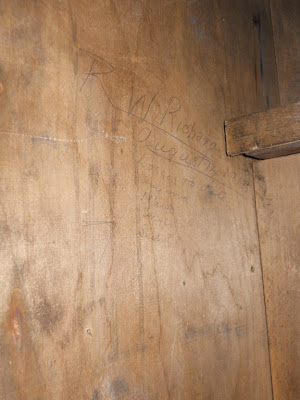 |
| The hut was later used by members of the Ross Sea Party of Shackleton's Endurance Expedition, in which Shackleton attempted the first land crossing of Antarctica. The expedition was not successful and several people were stranded here during the austral winter of 1916. Someone kept a list on the inside of his bunk of the people who had died by August 14 of that year. |
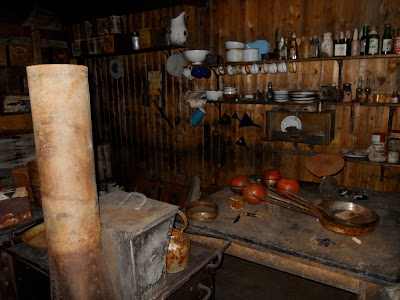 |
| The kitchen and eating utensils |
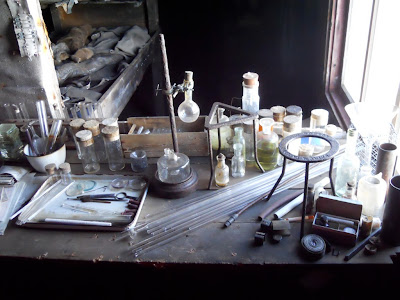 |
| The science laboratory |
One our way out of Cape Evans, the weather cleared up and the sun came out in full. I got a better view of the land around Cape Evans and saw Mt. Erebus for the first time.
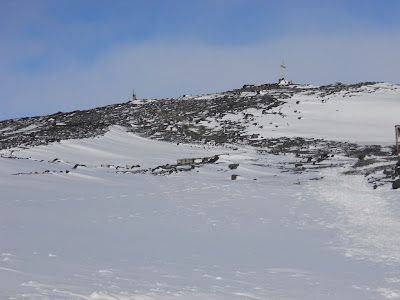 |
| A ridge near the "Terra Nova" hut with a memorial to men who died on one of the Antarctic expeditions. |
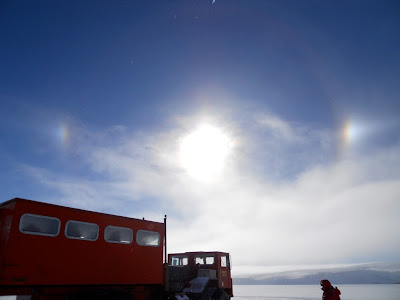 |
| Sun dogs appeared when the clouds cleared. |
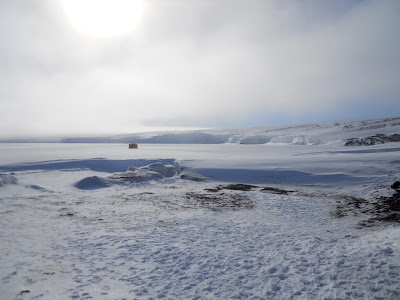 |
| Cape Evans |
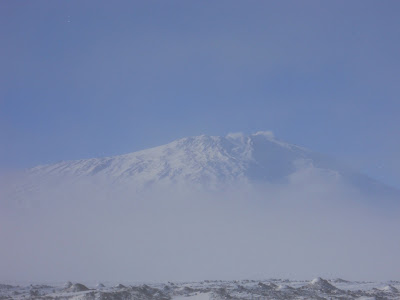 |
| Mt. Erebus stands 12,448 feet above sea level. |
|
I hope you all had a happy Halloween. I'll post pictures soon from the Halloween party here as well as photos of more Antarctic adventures! :)
It was awesome having you aboard this trip. Good on you for sharing this with others. You forgot to mention that you are now a pressure ride trip leader. Have I said to much? I am sure you will share later.
ReplyDeleteFAR OUT!!! Now you're looking like a true Antarctic Explorer! Great photos & stories. Janine
ReplyDelete